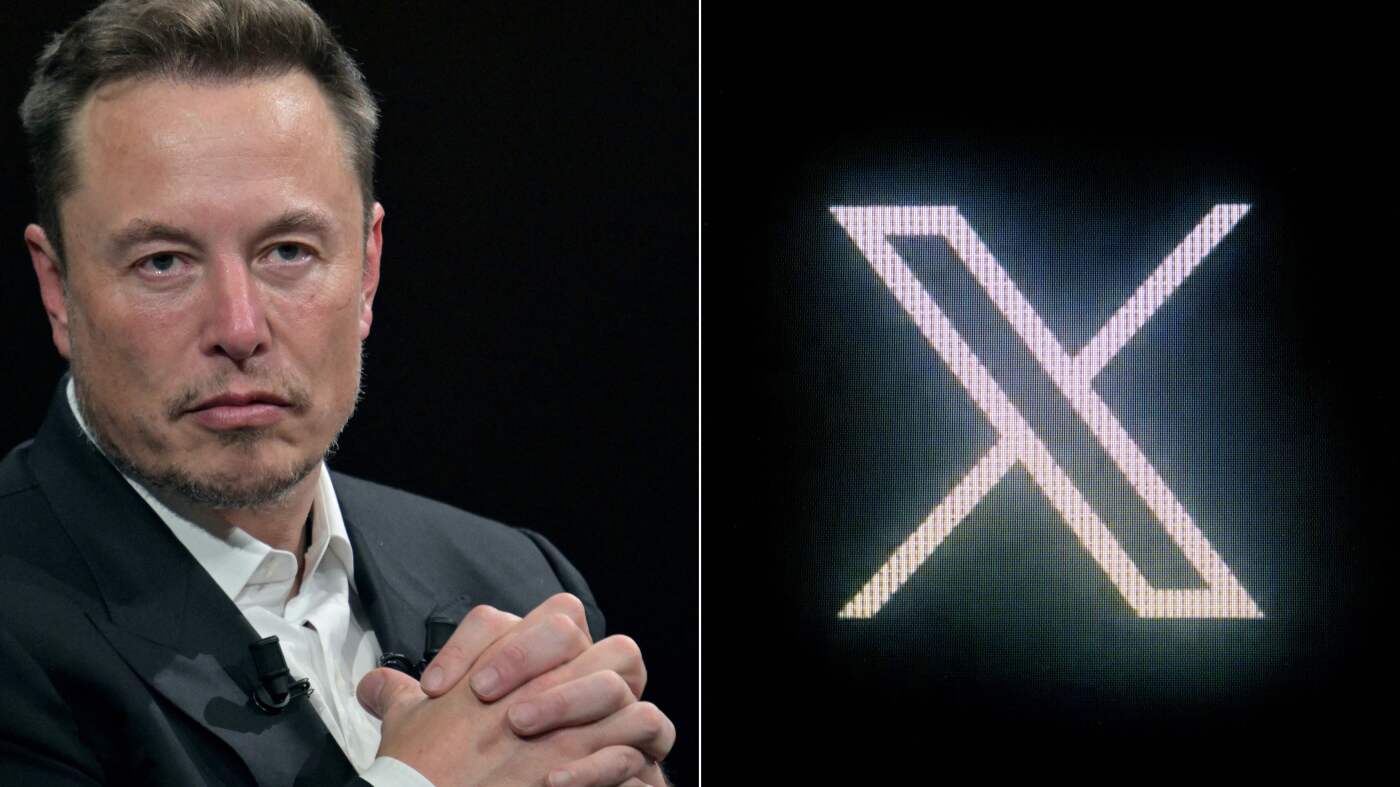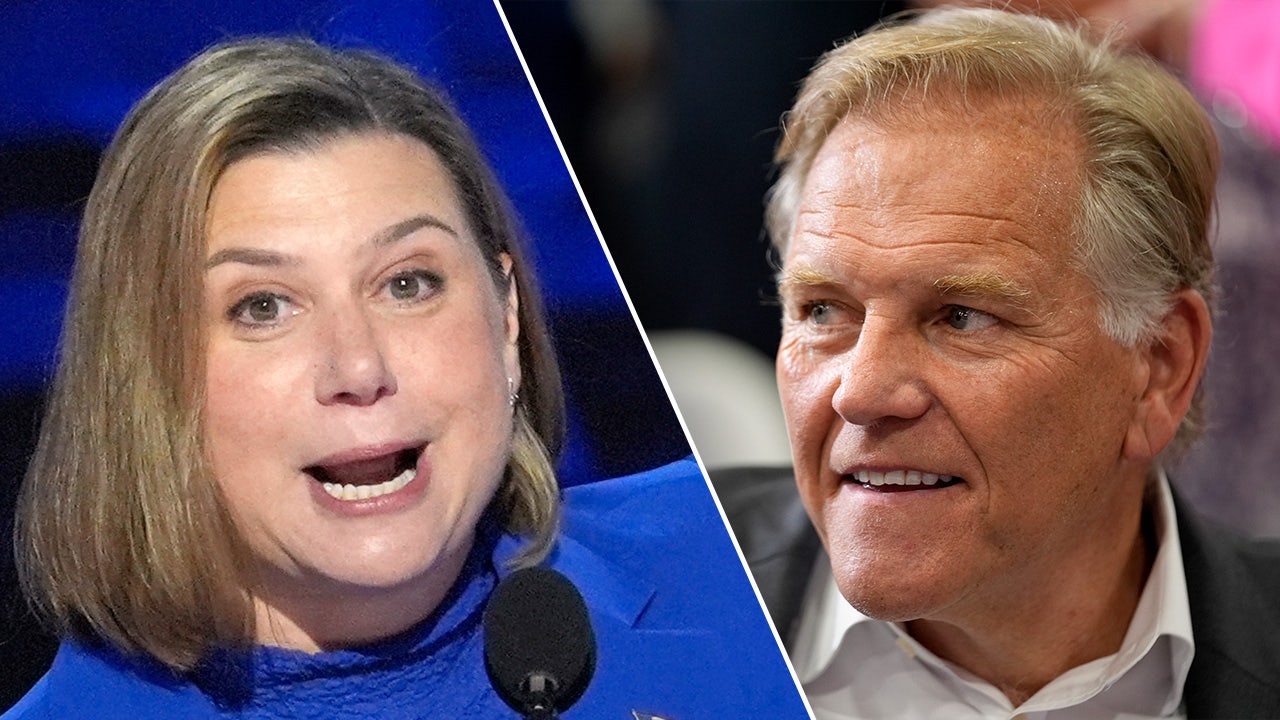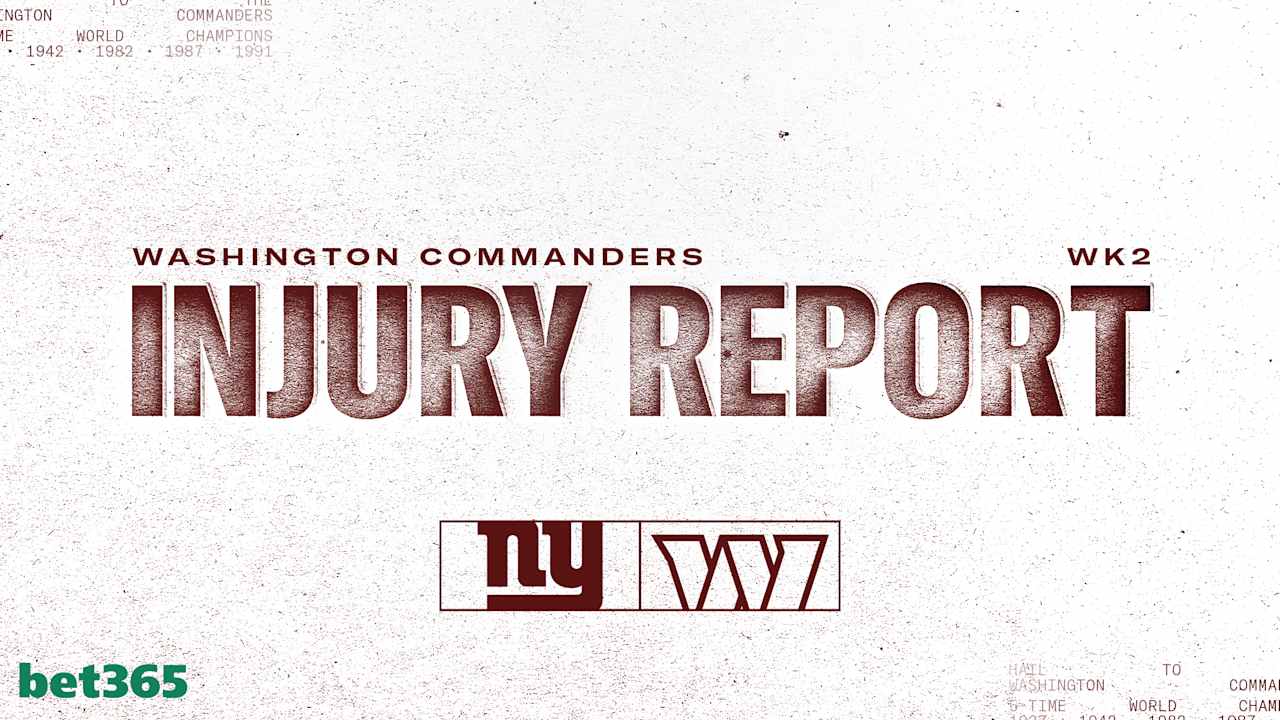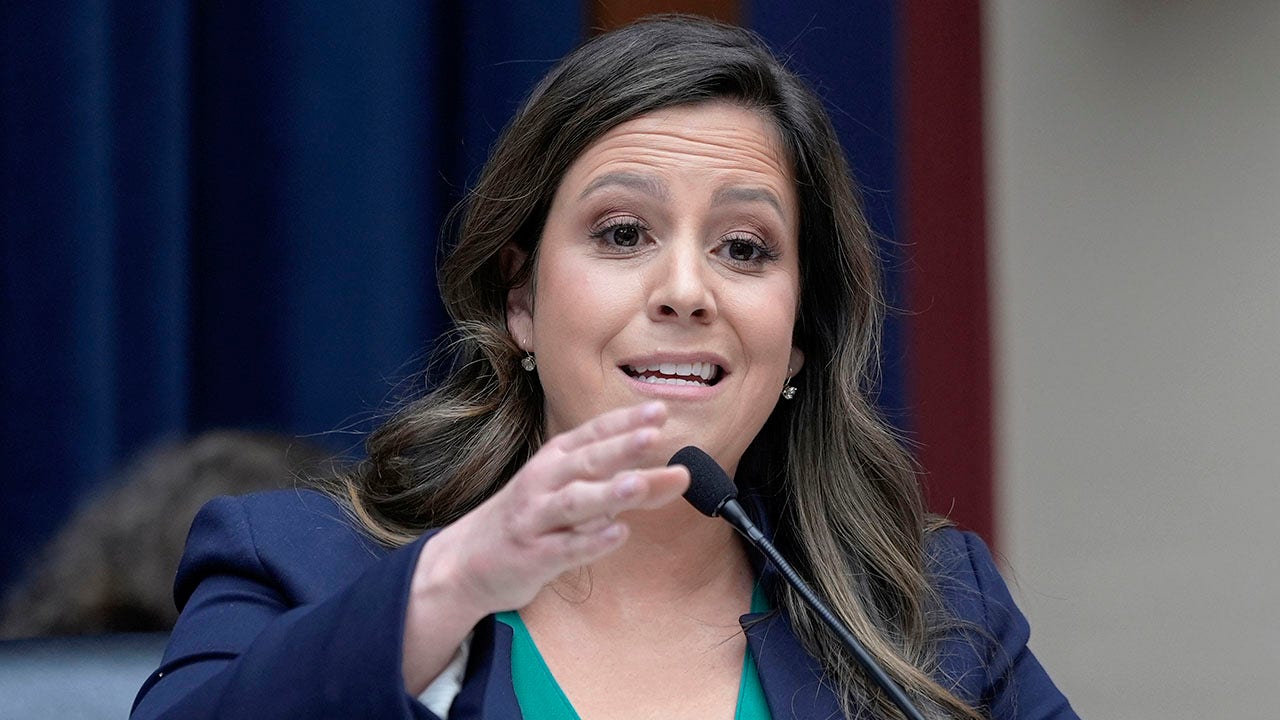Lifestyle
Jon Bon Jovi Convinces Woman Not To Jump Off Bridge in Nashville

Rock legend Jon Bon Jovi had the magic words to help one woman in distress Tuesday evening … seemingly convincing the stranger not to jump off a bridge.
Here’s what went down … the “It’s My Life” singer was filming a music video for his song “People’s House” on the John Seigenthaler Pedestrian Bridge in Music City around 6 PM, when JBJ noticed a woman in need of help.
Metropolitan Nashville Police Department

Check out the video … the woman in question appeared to be gearing up to jump off the famed bridge — but Bon Jovi then approached her and spoke to her, convincing her not to end her life.
Sources with direct knowledge tell TMZ … Bon Jovi routinely deals with people in crisis from hunger to homelessness, among other issues, through his work with his foundation, the JBJ SOUL FOUNDATION. He has extensive training in speaking with individuals experiencing a crisis … but he did what anyone would have done in that situation.
🚨Bon Jovi News
Jon Bon Jovi filming in Nashville for a music video for People’s House (war & treaty version)#BonJovi pic.twitter.com/ruv4PiiBnv
— Jerry Braden (@Jerrybraden92) September 11, 2024
@Jerrybraden92
Bon Jovi even helped pull the woman over the side of the railing, with assistance from another bystander … who also appeared to be talking to the woman.

The Nashville Fire Department and the Metro Nashville Police Department both responded to the scene … with Nashville PD Chief John Drake applauding the singer for taking swift action.

He added … “It takes all of us to help keep each other safe.”
It’s unclear what exactly the singer said to the woman … but Bon Jovi is known for singing an inspiring song or 2.
Take his band’s 1986 mega anthem, “Livin’ on a Prayer,” in which JBJ sings about powering through hard times and being there for loved ones.
Cleary, Bon Jovi was at the right place at the right time … and can now add “hero” to his already impressive résumé.
We’ve reached out to Bon Jovi’s team for comment … so far, no word back.
If you or someone you know is struggling or in crisis, help is available. Call or text 988 or chat 988lifeline.org.

Lifestyle
What Musk's Twitter takeover could tell us about a possible government appointment

After buying Twitter in 2022, Elon Musk changed the company’s name to X.
Alain Jocard/AFP via Getty Images
hide caption
toggle caption
Alain Jocard/AFP via Getty Images
Former President Donald Trump has said that if reelected, he will appoint Elon Musk to head up a new efficiency commission with the mission of conducting an audit of the entire federal government and making recommendations for drastic reforms.
But New York Times tech reporter Ryan Mac points out that the appointment would raise a host of potential conflicts of interest: “I mean, [Musk] is a man who runs multiple companies who are under investigation from various government agencies,” Mac says.
Musk’s SpaceX, for instance, is facing off with the National Labor Relations Board over allegations of sexual harassment. And the Department of Justice is investigating Tesla for comments Musk has made about the company’s self-driving technology.

In their new book, Character Limit: How Elon Musk Destroyed Twitter, Mac and fellow reporter Kate Conger take a closer look at Musk’s takeover of the social media platform now known as X. Since buying the platform in 2022, Musk has laid off or fired about 75% of the staff; eliminated rules banning hate speech and disinformation; alienated many advertisers and users and lost money.
“There’s almost no part of the company that was left untouched,” Conger says the Twitter takeover. “We saw Musk make serious cuts to management, to engineering teams, to teams that worked on content moderation, advertising salespeople, security, janitorial services. Every part of the company was reduced in some way.”
Mac says the cuts were so deep that some employees in the New York office were left without toilet paper — they had to bring their own from home. At one point, Conger says, Musk got so frustrated that Twitter was not saving more money that he called the staff into weekend conference call. During the course of the hours-long call, he went through the company’s budget, line item by line item, asking employees to explain why they were spending money.

“It’s a scene that I keep coming back to, thinking about this efficiency platform,” Conger says. “And if [Musk] will try to hold a conference call with all of the Office of Management and Budget and run through the government spending with them or how that’s going to work.”

Character Limit
Penguin Random House
hide caption
toggle caption
Penguin Random House
Interview highlights
On the debt Musk carries because of Twitter
Ryan Mac: I think he would be the first person to admit that he overspent on Twitter. It became a central point for him to try and get out of the deal. And, you know, there were attempts to renegotiate the price. This price of $44 billion, or $54.20 a share, that he committed to long before buying the company, he tried to get out. In that acquisition itself, you know, he did have investors, but he also raised a lot of debt. And that debt came with pretty onerous terms. He’s paying, I think, more than $1 billion on interest alone a year. And that didn’t exist on Twitter’s books before. And so he’s not only having to operate a business that was sometimes in the red, sometimes in the black, but now he’s layered this debt on top of it. And he’s also depressed the revenue from advertising by scaring a lot of the advertisers away.
So it made this kind of maelstrom of issues for him that the only kind of reasonable tactic was to cut and to cut severely, to kind of head off some of these costs. And it’s still not going very well for him. The company has lost more than half its valuation. I think internally it’s worth, I think $19 billion now. And some investors have even marked that down further. So it’s been a bit of a disaster from that standpoint.
On the impact Musk’s takeover had on advertisers
Kate Conger: Elon made a lot of changes to the kinds of content that was and was not allowed on Twitter. He brought back accounts that had been banned by the previous management for spreading misinformation, for inciting harassment, for spreading lies about the outcome of the election in the United States and elections abroad. And so there is this whole swath of new content that came on to the platform as a result of his takeover that was within the bounds of the law, certainly, but the kinds of content that advertisers did not want to see their brands standing next to. And so that resulted in a lot of advertisers pulling back their spending or pausing their spending altogether so that they could wait and see how Elon would address those issues. And instead of addressing them, he sort of turned on advertisers and it became a very contentious relationship where now he has sort of told some advertisers not to spend on the platform at all and sued major advertising groups that have questioned these policies that he’s put into place.
On a chaotic tactic Musk used to fire staff
Mac: He sends out this email, which includes a Google form that asks people to opt-in to staying at the company and being “hardcore.” Like, you have to dedicate yourself to this company. You have to work long hours. And I think folks had less than 48 hours to opt into this choice. It could have even been shorter than that. … This is not a quick decision. Some people said the email went to spam as well, so they never saw it. And this is like literally an opt-in email to keep your job and so people that didn’t click were essentially let go.

It was so chaotic that on the day of the decision that it’s supposed to happen, Elon Musk and some of his executives are holding these meetings to convince people to stay. They’re pitching them on why they should stay: “You’re going to make a lot of money. You’re going to make a huge impact. [Musk] is a generational entrepreneur.” … I think thousands of people left at that point.
Conger: You can tell that it’s something that he just decided to do sort of on a whim, as he does so many things in this story. But the option for employees who wanted to stay was to click “Yes, I consent to the new hardcore version of Twitter.”
Mac: It was totally a loyalty oath. You have to bear in mind, someone like Musk, he sells people on missions, right? SpaceX: You’re trying to get humans to Mars. At Tesla, you’re saving the environment and you are electrifying fleets of cars. But at Twitter, people didn’t have a mission to be sold on. Like, they weren’t sold on this idea of free speech. They had seen him go back and forth on the actual acquisition, not want it and want it again and really jerked them around. And now he’s asking for their full and total commitment, their loyalty pledge. And I think by that point, people had just kind of had it with him. …
Conger: He asked people to say, “Yes, I want to stay,” but he didn’t ask for people to click another option if they wanted to leave. And so it set off this real scramble within the remaining people employed on Twitter’s human resources team to figure out who had actually resigned from the company and whose access they needed to cut off from internal systems.
On the changing the platform so that users can pay to be verified

Mac: It was a major change to the app. There are a lot of criticisms of these verification badges, but they also had a lot of utility. Think of an emergency service announcing a tornado warning, for example, or an election official talking about voting results. And he wanted this change to the service to happen before the midterm elections in 2022, [at] this very crucial voting period. And that struck a lot of people in the company as irresponsible, rolling out this significant change to the platform. And it worried folks like the FBI, who reached out to Twitter at the time and asked him what was going on and what their plans were heading into the midterms. …

To his credit, he did delay it to the day after the election. But even so, the rollout was immensely chaotic. I mean, those impersonations that people thought would happen very much did happen. And there were parody accounts or, you know, imitations of things like Eli Lilly, for example, the drug company, saying things like insulin is now free. There were kind of mocking tweets about Nintendo and the famous Mario character flipping the bird from what looked like a verified Nintendo account. So Twitter employees’ worst fears were playing out in real time as this thing was being launched.
On how COVID-19 changed Musk’s politics
Mac: I would say 2020 is a shift for him. He gets very upset with how California is handling COVID. And a large part of that is because Tesla, which is largely based in California and has manufacturing operations, can’t manufacture its cars. And so he lashes out at the state of California at its policies during the time as we’re trying to stop the spread. And he downplays the seriousness of COVID. He makes some pretty awful projections about the virus itself. And he just seems to go more and more to the right on that issue. …
He has a trans daughter who seems to change his view on liberals and the progressive left. And this hatred of “wokeness” essentially, which is kind of an indefinable term. But he makes this this kind of boogeyman that he believes Democrats are supporting and that the Republican Party is the party for him, that this is the party that’s going to push back on those things. And it creates this kind of cocktail for him to kind of link up with Trump in 2024.
On the leadership styles of Musk and Trump

Conger: I think that there are a lot of similarities between these two men. I mean, the demand for loyalty above all else. Wanting people around them who are deeply, deeply loyal and committed to the mission. There’s also, I think, parallels in the impulsivity and recklessness with which they conduct business. We’ve seen similarities as well in the way that they run their businesses and some of the legal challenges that they’ve run into. …
Mac: I think going through lawyers is a common trait for both of them. As well as their addiction to social media. They are very online individuals.
On the disconnect between Tesla and SpaceX and X (formerly Twitter)
Conger: Musk’s achievements in engineering are pretty undeniable. The things that he’s been able to build at Tesla and SpaceX really bolster that reputation as a best-in-class engineer. What we’ve seen with Twitter is that Twitter is not really a technical problem. It’s a people problem, right? It’s a communication problem. You have to figure out how to bring the world together into the same place and allow constructive conversation. And it’s not something that Musk has a lot of experience with, nor has he excelled at in his own personal life. He’s often talked about his struggles to communicate and to find common ground with people. And so I think in Twitter, he’s really come up against a unique challenge that he was not equipped to take on.
One of the ways he has been able to succeed at Tesla and SpaceX is to just really bang his head against the wall, force himself to work these really long hours and kind of just force his way through these technical issues. And he’s tried the same approach with Twitter with less positive effect, trying to just kind of force the platform along, force these sort of rogue policy decisions where he’s deciding to ban people he doesn’t like. And it hasn’t worked out as well. And it has been quite damaging to his reputation.
Sam Briger and Joel Wolfram produced and edited this interview for broadcast. Bridget Bentz, Molly Seavy-Nesper, Julia Redpath and Bobby Allyn adapted it for the web.
Lifestyle
A teen meets her middle-aged self in 'My Old Ass' and finds hindsight isn't 20/20

Maisy Stella and Aubrey Plaza in My Old Ass.
Marni Grossman/Amazon MGM Studios
hide caption
toggle caption
Marni Grossman/Amazon MGM Studios
Eighteen-year-old Elliott (Maisy Stella) might be instantly recognizable to anyone who’s ever been a teenager from a small town. She’s just weeks away from leaving behind her quiet and all-too-familiar childhood surroundings for the excitement and promise of college in “the city” – Toronto, in this case – and already has one foot out the door. Spending time with her parents and little brothers takes a back seat, of course, to hanging out with her best friends around the Muskoka Lakes in her dingy old motorboat and finally hooking up with her longtime crush.
What differentiates Megan Park’s sneakily affecting and quirkily-titled My Old Ass from other last-summer-before-adulthood movies is its high-concept premise of a hallucinogenic trip which proves literally existential. For her birthday, Elliott and friends Ro (Kerrice Brooks) and Ruthie (Maddie Ziegler) camp out in the woods and take mushrooms. Elliott’s experience conjures up her 39-year-old self, played by the always fascinating Aubrey Plaza.
Younger Elliott has a lot of questions – plus a couple of harsh critiques – for Older Elliott. Older Elliott is happy to impart some sage wisdom and advice, to a point. Don’t take time spent with your family for granted. Wear your retainer. Oh, and also: Avoid anyone named Chad.
Almost immediately Elliott meets a gangly guy around her age named – what else? – Chad (Percy Hynes White); he’s taken a summer job on her parents’ cranberry farm. Up to this point, she’s only ever been romantically interested in women. But she’s drawn to him anyway, partially because any headstrong teenager would be compelled to rebel against Older Elliott’s frustratingly vague warning, and also because Chad is effortlessly charming and almost-too-perfect in every way. She tries pushing him away, but the two collide, the experience throwing everything Elliott thought she knew about herself and her sexuality into whack.

Kerrice Brooks as Ro, Maisy Stella as Elliott, and Maddie Ziegler as Ruthie in My Old Ass.
Courtesy of Prime/Amazon MGM Studios
hide caption
toggle caption
Courtesy of Prime/Amazon MGM Studios
There’s an array of directions a filmmaker could go in with such a prompt, and Park and her well-assembled cast ultimately craft a coming-of-age story that’s uniquely satisfying and resonant, not unlike Greta Gerwig’s Lady Bird, with a dash of The Twilight Zone thrown in. It’s not a psychedelic, woo-woo kind of film, nor does it dabble in CGI-produced special effects conveying magical or otherworldly happenings.

The closest it gets to fantasy is a brief, playful musical number harkening back to Elliott’s childhood obsession with a certain Canadian pop star. Otherwise, My Old Ass is grounded firmly in a kind of ordinary alternative reality where, for reasons mercifully never explained, a young adult might have a chance to speak directly to their “middle-aged” self. (Note: Calling a 39-year-old “middle-aged,” as younger Elliott does, may seem like a dig – and it is – but technically, she’s not wrong.) Hollywood’s bludgeoned the multiverse theme to a pulp, yet here’s proof a clever and refreshing spin can still be had.
The absence of mystical lore leaves ample space for rich character- and world-building in a tidy 90-minute package. Elliott as portrayed by Stella moves, thinks, and expresses herself like a real Gen-Z teenager might: horny, kind of bratty (prescient, given the present era), and a little self-absorbed, while also being confident, outspoken, and curious about a wider world she has yet to experience. Older Elliott gets less screen time and has the arguably trickier task of emanating wisdom hard-earned from actually experiencing that wider world, while still seeming deeply connected to the optimistic 18-year-old she once was. Plaza pulls it off by tapping into her natural talent for conveying malaise without being boring, and approaching her side of the character with wit and compassion.
Ultimately, the two parts add up to a whole that wonderfully captures dual essences: youth and inexperience, and age and wariness. Park engages with perennial questions of identity and, most profoundly, ponders whether hindsight is truly 20/20, or something less clearly defined. There are facets to be appreciated in each stage of life; the challenge is in recognizing them in real time.

Lifestyle
Vet care costs are skyrocketing in California. 8 people share their bill horror stories

Two things are certain in pet parenting: 1) your furry loved one will one day have to visit the vet and 2) the cost of veterinary care is increasing, rising more than 60%, over the last decade, according to a recent New York Times report.
Stacie Straw, in Long Beach, Calif., spent about $30,000 in 2022 on her English Bulldog rescue, Blanche, which she mostly paid for with a CareCredit card at zero interest, she said in response to a Times survey inquiring about readers’ vet expenditures. The cost was due to the “unfortunate confluence,” she said, of the dog needing ACL surgery and then developing mast cell cancer. Ultimately, Blanche passed away after several months of treatment.
“I have a lot of empathy for vets because they’re doing the best they can,” Straw said in a follow-up interview. “But it’s really hard and expensive for most people — it’s difficult to spend $100 to take your dog to the vet just to know if there’s an issue. That’s not chump change. And you may have to make trade-offs in your spending decisions to [pay for] that.”
Stacie Straw’s English bulldog rescue, Blanche.
(Stacie Straw)
Ballooning veterinary costs are not necessarily your mom and pop vet’s fault. A combination of factors in the industry is driving up vet bills. Drugs and vaccines are more expensive than ever. As is the cost of staffing vet offices, rent, utilities and medical equipment. Because there are more advanced medical technologies and treatments for pets now — MRIs, allergy testing, even acupuncture — there’s often more to charge for. And the ongoing corporatization of independent veterinary practices — in which big businesses look to maximize profits — is driving costs through the roof.
In addition to readers who have emptied their pockets at the vet, we heard from more than two dozen veterinarians across the country in response to our survey, nearly all of them citing the exorbitant cost of their veterinary school tuition. Many of them also noted that vets have a higher suicide rate than the general population — between 2.1 to 3.5 times higher, according to a 2019 Centers for Disease Control and Prevention study.
Dr. Jessica Bachmann, of Ira, Vt., noted her “$400,000, eight-year education” to become a veterinarian.
But an industry in crisis doesn’t make caring for our pets any easier. If you’re enduring the outrageous cost of veterinary care, take some solace that you are not alone. Here’s what some Times readers had to say on the topic.

Raquel Cypert’s rescue chihuahua-pug, Luna.
(Raquel Cypert)
Raquel Cypert and Luna, Upland, CA
Highest vet bill: $3,800 — after having spent $800 the day prior on Luna at the vet.
What happened: “Luna became really lethargic and was vomiting one day. I took her to our regular vet and they ran some tests and gave her some fluids and said it was probably a stomach virus and sent us home. She spent the night vomiting and seizing. The next morning I took her back to that vet who said they could put her down or she could go to an emergency hospital.
I red lined [my] Audi a couple of times to the hospital and we ran in where they were waiting for us. The vet called us into the room about 20 minutes later and said she has Addison’s disease which is a deficiency of her stress hormones and she would need emergency meds and IV fluids and need to stay overnight to get her stable. $3,800 later we got our baby back.”
The outcome: “She needs monthly injections and daily meds but her condition is pretty manageable.”
Any cheaper alternative care options? “Because I am a nurse, I am able to inject her myself. So it saves about $1,000 a year avoiding monthly vet visits.”
William G Keiner and his dog, Los Angeles
Highest vet bill: $400 quickly escalated to $5,000 “before we were forced to decline treatment.”
What happened: “Our dog, about one year old, slipped his leash and ran into a car. Being a rescue who had distemper, he does not qualify for pet insurance. So when we took him to the emergency vet, we were presented with an ever-escalating stream of estimates … before we were forced to decline treatment. Essentially they admitted our dog, quoted a price to assess him and give him pain meds. They assessed and came out with a higher estimate. Went back in, came out with another higher estimate. This happened two-three times before we had to decline treatment. We still ended up paying close to $2,000. The vets were neither able to reset the broken leg or properly splint the leg.”
The outcome: “We opted for pain killers to get us through the weekend [and] to see a non-profit vet.”
Any cheaper alternative care options? “We took our dog to a non-profit vet who worked with the rescue group we foster for. He was treated but it didn’t go well. The pins they put in his leg got infected. This vet, we learned, was [ultimately] shut down by the city. We eventually found an independent vet who agreed to a reasonable [price]. Still thousands of dollars to remove the pins, which did the trick.”
Misty Dailey and Elfin, Spring Branch, TX
Highest vet bill: $2,200 (in Sacramento, Calif., 1992)
What happened: “Gastric Tortion. Deep barrel-chested dogs like Dobermans, boxers, Great Danes, etc., can have a tendency to woof their food down. If it’s not watered down or the bowl raised so they don’t have to bend down so much, it causes too much air to go into their gut. Their gut starts expanding (like a horse with colic) and their intestines will twist, killing them. I was leaving for a weekend in Lake Tahoe and saw my Doberman was all swelled up and looked like a chubby Shetland pony. My vet saw Elfin, whisked her away from me and took her to X-ray. She said she’d never seen a dog so bloated and still alive. She put her under, sliced her belly open, whooshed the air out of her, and then basically stitched her organs to the side of her so if it ever happened again, she wouldn’t twist up.”
The outcome: “I began raising up all my dogs’ dry food meals off the floor so it wouldn’t happen again.”
Any cheaper alternative care options? “No. I was grateful to pay the $2,200. They saved her! Elfin has [since] gone to Heaven.”

Michelle Min’s newly adopted dog, Lola.
(Michelle Min)
Michelle Min and Lola, San Gabriel Valley, CA
Highest vet bill: Over $1,300 (in 2013)
What happened: “One heart ultrasound [was] needed for a freshly adopted (doctor mandated) ADA dog, whom I completely adored, she saved my life. I was on a fixed income and pet insurance refused to cover it, despite collecting premiums. Turned out that she had serious, congenital heart issues. Lifelong medications (about five a day) and expensive, home cooked chicken breast/rice/veg diet followed for her whole life. She was worth every penny, there was nothing I wouldn’t have done for her, but I cannot go through this again. Too painful, not to mention the expense.”
The outcome: “It only confirmed the vet’s diagnosis prior to the test. She was already given meds and supplements to address her heart problems. No changes or adjustments were made following the test.”
Any cheaper alternative care options? “No. It’s outlandishly expensive to properly care for your companion, even if she serves a life-saving purpose as an ADA animal. This may be the hardest part. Living as a disabled person on a fixed income, I (willingly) sacrificed for years, so she could have proper care.”

Daniel Smith-Ramirez’s dog, Legoshi.
(Daniel Smith-Ramirez)
Daniel Smith-Ramirez and Legoshi, Cocina, CA
Highest vet bill: $2,300 with $4,000 on the horizon.
What happened: “This month, my dog has had bouts of stomach issues. He’s had to be treated with five different meds and hospitalized for three days. He will also potentially need an endoscopy. [He’s] been diagnosed with an ulcer, but [the] exploratory endoscopy [will] confirm.”
The outcome: “The first set of meds was not [helpful], so now we are trying stronger meds.”
Any cheaper alternative care options? “This is actually the cheapest in the area. We were told that other hospitals would charge roughly $10,000-20,000.”
Juan Chavez and Sugar, Pasadena
Highest vet bill: $10,000
What happened: “Our dog, Sugar, was hospitalized for pancreatitis. She had to be interned in a pet hospital for 24 hours, for one week.”
The outcome: “She was put to sleep after seven days.”
Any cheaper alternative care options? “No. Our neighborhood is notorious for good, but high-cost, vets. I’m under no illusion about getting cheaper vets, but perhaps we need to shop around outside our location using Reddit or NextDoor recommendations.”

Shelley Keith’s dog, Olive.
(Shelley Keith)
Shelley Keith and Olive, Sherman Oaks, CA
Highest vet bill: $3,000
What happened: “My dog was having seizures and I took her to an ER animal hospital.”
The outcome: “Lots of diagnostic tests but nothing wrong.”
Any cheaper alternative care options? “No.”
Jamie Tran and Grady, Santa Maria, CA
Highest vet bill: $12,149.43
What happened: “My dog that I had just adopted five days before became very ill out of the blue. He was so critical that they weren’t sure he’d make it through the night. He remained critical for the next several days with no definitive diagnosis. He was treated for potential sepsis, anaphylaxis and leptospirosis.”
The outcome: “I know that if he had still been at the shelter, they would have made the decision to let him go. Because they treated him for a myriad of things based on his symptoms, they were able to get him stable. When they discharged him, they provided seven medications to continue for two-three weeks after. Oddly enough, they discharged him saying there was nothing more that they could do and we would need to continue treatment at home and see if he continues to improve. I didn’t leave with the most confidence that he would make a full recovery. I don’t regret paying to save his life, but it’s something I’ll be paying for a long time.”
Any cheaper alternative care options? “No. The cost of veterinary care is quite expensive. Unfortunately where I live, the options for care are quite limited or nonexistent. They potentially wanted to transfer him elsewhere to be seen by a specialist. The options for that were an hour or two away as there are no specialists available anywhere closer. If your pet is in need of a specialist, they most likely are not well enough to travel long distance to receive the care they need.”
-

 Politics1 week ago
Politics1 week agoMichigan becomes a top GOP Senate target as Mike Rogers ties with Dem opponent among older voters
-

 World7 days ago
World7 days agoMeloni says 'we are making history' as Italy’s FDI reviews progress
-

 World1 week ago
World1 week agoTaiwan court orders release of ex-Taipei mayor arrested in corruption probe
-

 Business1 week ago
Business1 week agoHow Self-Driving Cars Get Help From Humans Hundreds of Miles Away
-

 Politics1 week ago
Politics1 week agoMargin of error race between Harris and Trump as 2024 election enters final stretch
-

 World1 week ago
World1 week agoSeven EU members hadn’t received any post-Covid funding by end-2023
-

 World1 week ago
World1 week agoIsraeli forces using ‘war-like’ tactics in occupied West Bank: OCHA
-

 World1 week ago
World1 week agoFrontex chief: NGO rescue ships don't embolden Mediterranean migration















